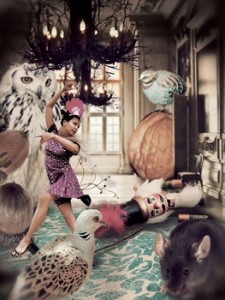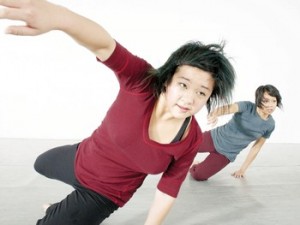After more than three decades of observing that holiday über-warhorse, The Nutcracker, one would think my exhaustion had reached its limits. Seven of those years were spent dancing in various permutations of the ballet, 12 more were spent writing reviews and labored newspaper features about it. In recent years, my essays have focused primarily on the nature of that exhaustion, using humorous language.
And then, December rolls around. I find myself at yet another performance, Tchaikovsky’s music begins, and inevitably I fall under its spell only to mentally “return†two hours later, wondering how I let that happen.
Some years ago at the The Festival International de Nouvelle Danse (FIND) in Montréal, I remember William Forsythe explaining that he refused to bend to pressure in Frankfurt and would never create his own Nutcracker. I admired his unwillingness to be the company’s Christmas ticket-sales whore. However, I admire as well those choreographers who are still willing to take it on, and thanks to a few of them I’m eager to reconsider the work.
Two of my favorite deviations are David Parker’s Nut/Cracked and Mark Morris’ The Hard Nut, both of which blend a gay sensibility with an American post-war, neo-romantic (if not capitalist) attitude towards Christmas. They are perfect diversions for a gay baby-boomer like me.

Houston’s Suchu Dance premiered Щелкунчик (Shchelkunchik) last night at The Barnevelder Theater in Houston. It’s a wacky yet intelligent re-interpretation which aspires to a certain low-brow appeal. It doesn’t appear to be intended as deep, but the real delight is that sometimes it invades such territory and brings more than a few important choreographic ideas to the table. At 70 intermission-free minutes, it is just right.
Choreographer and Suchu artistic director Jennifer Wood doesn’t take the matter of deconstruction lightly, even if this is a seemingly light-hearted piece. Her goal with Shchelkunchik could be thought of as an attempt to comprehend the legacy of Nutcracker via its associations to a range of perspectives and circumstances. An experienced viewer will recognize, for example, her frequent paraphrases of the maidens in Nijinsky’s L’après-midi d’un faune.
Things are jumbled in an intriguing way. The “Spanish†number is more of a belly dance. The “Marzipan†is set to a klezmer arrangement, in a minor key, and the women become evidently dizzy after turning for too long. “Sugar Plum†is a sort of gender-free ensemble, men and women wearing either vaudeville mustaches or curly blonde wigs to indicate their respective role in the group and in the pairings. The trepak blends into Mother Ginger, the apotheosis opens what would traditionally be the second half.
All along, the primarily modern/contemporary-trained dancers attempt to bring it off as le grand ballet, but to no avail. They strain at lifts, smile flagrantly, labor through a Busby Berkeley-inspired number, now and then quit in disgust. It’s hilarious, executed without cynicism, and one admires their “failure†to dance properly.
Humor without discipline doesn’t work, and even though this Nutcracker is off-the-cuff, it is well-rehearsed. Tina Shariffskul (seen above and below), in particular, is an accomplished dancer with an extraordinary comic talent, the prima ballerina assoluta at the heart of show. Jeremy Choate has provided an unusual lighting scheme, a sort of acid-trip Zen garden glued to the ceiling, with a cloud of white christmas lights, orange bulbs flickering in a spray of branches on the other side, and of course a disco mirror ball in the middle.
Performances continue through December 4.



